| Content | Brand New, in sealed original box, never used, in perfect condition!
Tascam product info:
Built-in DSP 4 line outputs Dante converter to respond to various needs of contractor market and professional audio scene.
The ML-4D/OUT-E is a compact converter that converts Dante input signals into 4-channel line output signals. With half the size of a standard 1U rack, the ML-4D/OUT-E is suitable for different Dante systems as an exquisite analog output unit. The built-in DSP mixer enables small scale systems to fully perform with a variety of input/output models the TASCAM Dante Compact Processor Series offers. ML-4D/OUT-E supports up to 96kHz/24bit and uses Euroblock connectors for analog line output.
4 line output
4 Dante input/output
Supports PoE (Power over Ethernet)
Up to 24bit/96kHz
Includes a variety of DSP functions for optimal use in different scenes/environments (Output effects, 4 in/4 out matrix mixer)
Supports Dante daisy chain; this allows two Dante Compact Processor models to be connected without a network switch
Compatible with Dante Domain Manager and Dante AES67 Mode
Flexible scene preset function allows to work in different area situations (Up to 50 presets)
Timer event function allows to automatically switch scenes at a specified time (planned to be compatible on a future version update)
2 types of user control software available for Windows/Mac/iOS/Android devices:
For integrators: input/output routing selection, DSP/design/scene settings of the complete system, etc.
For end-users: simple app design for only the necessary functions such as area volume settings, etc.
Remote control via GPI and Dante
Half-rack mountable size
Equipped with indicators that show LAN/Dante connection status and sample rate
Equipped with signal indicators that monitor line output signals
Configurable reference level (via remote control only) | The Dangerous Music 2-BUS+ is a 2U, 16-channel analog summing mixer with both XLR and D-sub inputs. It raises the bar on its legendary 2-BUS predecessor with even lower crosstalk, distortion, and noise-floor performance, along with stunningly precise soundstaging and center focus. Dangerous spent over two years developing three onboard audio processors that, with a simple push of a button and twist of a knob, add tone and color to your stems or across your entire mix directly from the 2-BUS+. The 2-BUS+ is smartly designed, extremely useful, and sounds incredible.
A trio of custom audio processors
In sync with Dangerous Music's doctrine of tonal coloration as a per-project artistic choice, the 2-BUS+ features three separate custom audio processors that selectively add tone and color to your mixes. In parallel processing mode, you can deploy Harmonics, a tuned harmonic distortion generator, and Paralimit, a FET limiter on steroids. At Sweetwater, we've applied both of these across stereo mixes and on pairs of stems. X-Former kicks in a pair of custom transformers with core-saturation control on your stereo mix outs. You can have all three tone processors active concurrently, and you can flip the order of signal flow through distortion and limiting.
Outstanding flexibility
Dangerous Music knows that each engineer — and session — is unique, so they designed the 2-BUS+ for outstanding professional flexibility. They spec'd it with an XLR stereo insert before the outputs for adding a separate compressor or processing chain that you can bypass at the touch of a button for a quick reference comparison. Channels 1/2 and 9/10 can be set to mono to rout; for instance, vocals/bass and kick/snare each to its own mono input. They also gave the 2-BUS+ an output control stepped in 0.5dB increments from -4dB to +6dB, and included XLR connections for both the main and monitor outputs.
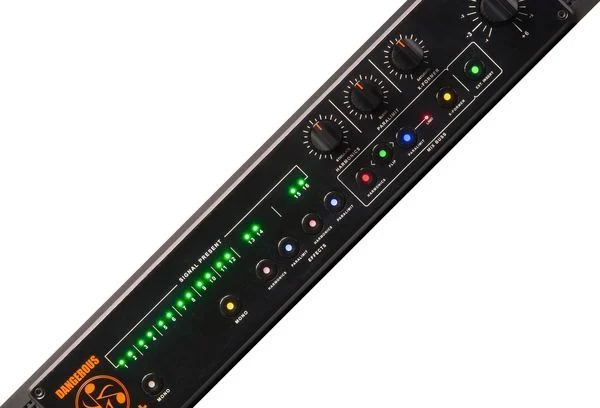
Gang 'em for high channel count
Need a full-on analog "console" summing experience? Gang together multiple 2-BUS+ units via the stereo expansion inputs XLR to create a customized channel count. For the ultimate in tonal flexibility and control, the custom audio processors on each unit apply across the ganged group output. With three units, for instance, you'll have 48 channels of analog summing, with the first two units employing Harmonics (distortion), and Paralimit (limiter) across two separate stereo stems, and the third unit applying X-Former transformer saturation on the master stereo outputs.
What the pros are saying about the 2-BUS+:
- "The Paralimit and X-Former appear to be magic knobs. Special mention goes to the Paralimit because it does that lovely thing of bringing up the general ambience without slamming the track, something I particularly love on drums. Plugged it into my system along with my old 2-BUS and Dangerous MONITOR ST, and wow ... it's fantastic! Bags of air and space around the mix." — Chris Blackwell (drummer/composer)
- "Since the 2-BUS has so much headroom, it's really easy for me to decide that I want the entire vocal submix to be brighter or warmer, or more or less compressed." — Michael James (producer/mix engineer)
- "The Dangerous Music 2-BUS is one of the reasons my studio delivers a killer sound that grants the edge on the competition." — Alberto Rizzo Schettino (engineer)
- "Between SSL, in-the-box, and 2-BUS ... in blind tests ... it was a unanimous decision that the Dangerous mixes beat out everything. The 2-BUS mixes ... were simply cleaner and warmer than the SSL or in-the-box mixing ... I just don't miss my console." — Gina Fant-Saez (mix engineer)
- "With the 2-BUS LT, elements have their own place. You end up with a quicker, bigger mix and retain a more natural, less processed sound." — Phil Greiss (producer/engineer)
- "The Dangerous Music equipment is the centerpiece of my mixing rig. Everything I do goes through a Dangerous MONITOR, 2-BUS, MASTER, and BAX EQ. Everything." — Fab Dupont (mix engineer)
- "I don't understand how the 2-BUS has been in the studio for so long, but hasn't gotten to live shows — the sound is unbelievable." — Horace Ward (FOH engineer)
- "The harmonic and transformer flavors are great options to have and the parallel limiter is a genius idea." — Chris Tabron (producer/mix engineer)
Dangerous Music 2-BUS+ Analog Summing Mixer Features:
- Stunning 16-channel analog summing mixer injects your mixes with exceptional headroom and dimensionality
- 3 analog options (Harmonics, Paralimit, and X-Former) for adding tonal coloration to your mix
- XLR and D-sub input connectivity and flexible routing allow for a customized workflow
- Integrate your outboard gear easily with the switchable stereo analog insert
- Output control is stepped in 0.5dB increments for perfect recallability
- High-quality components ensure audiophile-grade sound
| While the convenience and power of DAWs is indisputable, some engineers prefer the sound of analog, particularly when it comes to mixing. That's where the Burl Audio B32 Vancouver analog mix bus comes in. Designed specifically for the digital audio environment, this summing amp lets you realize the full potential of your DAW by delivering the kind of sound quality you'd expect from a classic, large-format analog console - from a compact 1U device. Built in the USA using only the finest mastering-grade components, Burl Audio's B32 Vancouver sums 32 channels (24 stereo, eight mono inputs) to dual stereo outputs, and gives you the flexibility of a 6dB gain boost and tone-enhancing switchable output transformer.
Burl Audio B32 Vancouver 32-channel Mix Bus at a Glance:
- Large-format analog console hugeness
- Impressive Sonic versatility and ease of use
- Burl Audio: pro gear driven by an audiophile sensibility
Large-format analog console hugeness
If you've ever worked on a classic large-format analog console, you've likely got that inimitable sound stuck in your head, and the results you're getting out of your DAW may not be cutting it. Enter the the Burl Audio B32 Vancouver. With no capacitors in its discrete analog Class A signal path, this 32-channel "mix bus" embues your mixes with the hugeness, impact, spatial detail, and clarity. It gives your mixes the "glue" they've been missing.
Impressive sonic versatility and ease of use
Burl Audio's B32 Vancouver gives you impressive sonic versatility, and it's so easy to use. Aside from your left- and right-channel mix level pots, there are just two other controls for each channel - a button that engages a 6dB summing amp Gain Boost, and a button to insert Burl's BX5 output transformer into the circuit. The Gain Boost endows your mix with hugeness and slam factor, while the BX5 output transformer provides an alternate tonality (which sounds amazing, trust us). The bottom line? If you want massive-sounding mixes, the Burl Audio B32 Vancouver is a no-brainer.
Burl Audio: pro gear driven by an audiophile sensibility
At Sweetwater, we've been nothing but impressed with Burl Audio gear. Based in a professional Santa Cruz, CA recording studio, Paradise Recording, Burl is driven by an audiophile sensibility; their gear is designed by pro recording engineers, for recording engineers of all levels. The company's directive is simple: to provide you with high-quality recording equipment that will improve your recording, mixing, and mastering. Their innovative solutions not only sound amazing; they intelligently address the challenges of the digital age.
Burl Audio B32 Vancouver 32-channel Mix Bus Features:
- Discrete analog Class A signal path
- Eight mono inputs, 24 stereo inputs
- Audiophile-grade 0.1% stepped attenuators
- Switchable BX5 output transformer
- Summing amp Gain Boost
- Dual stereo outputs
- Made in the USA
| The Dangerous Music Liaison puts the fun back into trying out creative combinations of gear. The Liaison also lets your setup remain absolutely flexible — just what you need if you want to survive in a market that often demands recording, mixing, and mastering services from a single studio. The Liaison's claim to fame is that it combines your favorite pieces of music gear together in various configurations, allowing you to try out new gear combinations and recall them later. But there's a lot more to the Dangerous Music Liaison than mere signal routing.
Mix, match, store, and recall all your favorite gear combinations
Dangerous Music has always been dedicated to providing serious engineers with the most useful gear possible. They've upped the ante again, with the Liaison. The Liaison lets you experiment with different combinations of gear, giving you a total of six discrete 2-channel inputs and two 2-channel buses. Want to hear how that compressor sounds pre- and post-EQ? With a Liaison, you can audition various hardware combinations as easily as swapping around plug-ins in a DAW. What's more, you can store and recall your favorite setups, so you can keep that killer vocal compression chain or that thumping kick drum processing path close at hand.
Flexible stereo buses give you advanced configuration options
When we ran the Dangerous Music Liaison through its paces here at Sweetwater, we found that its stereo buses do more than just compare two discrete signal paths. Depending on how you configure them, these stereo buses can provide you with two completely independent, flexible signal chains, each serving as its own small routing matrix. You can also combine both buses to create a long and flexible continuous signal-processing chain, in which you can reorder entire sections of your gear setup. Even cooler, you can use the Liaison's buses to establish complex parallel signal processing — opening up limitless sonic possibilities.
Mastering-grade components for unrivaled sound quality
As is the case with all Dangerous Music products, the Liaison is made entirely from mastering-grade components, so you never have to worry about audio coloration or latency. In fact, when set to simply pass audio, professional grade testers used to measure the Liaison read as though they were plugged into themselves. Talk about quality control! Here are some of the other specifics. Both the inserts and the buses feature straight-wire, unamplified, balanced signal paths. All audio is relay-switched via top-quality, gas-filled, bifurcated contact relays — ensuring that all switching is absolutely noiseless. The rest of the Liaison's signal paths feature mastering-grade components made by THAT Corp. and Burr-Brown.
What the pros are saying about the LIAISON:
- "The Dangerous LIAISON feels like engaging light-speed for my workflow...and make no mistake: workflow IS sound. The sheer speed at which you can do critical comparisons of entire signal chains does have a direct and positive impact how your music will sound." — Alberto Rizzo Schettino (Engineer)
- "One of the best features of the LIAISON is the monitor outs...you can monitor the signal at four points in the chain: before and after Bus A and B. The usefulness of this feature is huge, and Dangerous deserves major props for including it! The switching of inserts is managed by beefy relays that are as transparent as any I've ever heard." — Adam Gonsalves (Mastering Engineer)
- "LIAISON gives you the impetus to rethink how you record, mix, and master your music...[and] using the LIAISON is dead simple. I think of LIAISON not as an insert switcher, but as a creativity enabler." — Andy Hong (Writer/Reviewer)
- "The Dangerous LIAISON is incredibly exciting. To have a device that lets you so easily switch between processors, swap the order of processors, do quick A-B comparisons of signal chains. It makes my work better!" — Jonathan Wyner (Mastering Engineer)
- "Being able to switch devices from one bus to the other is extremely useful. The fast switching is amazing!" — Jeff Lipton (Mastering Engineer)
- "The LIAISON is really important — I can do a lot of combinations of chaining gear and I am able to work a lot faster. Before the LIAISON [I had to] switch the patchbay and compare the sounds. Now I am 20-times faster than before, I like the way the LIAISON allows me to still be in the energy of the music. — Antoine "Chab" Chabert (Mastering Engineer)
- "So happy with the LIAISON. Being able to switch gear in and out from the listening position without leaning over a patch bay is fantastic. After sitting in this chair for so many years, it actually improves my mixing ergonomics considerably." — Bob Power (Mastering Engineer)
Dangerous Music Liaison Features:
- Flexible signal routing matrix that allows you to combine the gear in your studio in fun, exciting, and creative ways
- Leverage all your gear, all the time
- Improve your tracks, mixes, and masters by auditioning and marrying the perfect ensemble of equipment
- 2 independent stereo buses mean you can set up 1 as a tracking path and the other as a mix path, without repatching, or chain them together
- Separate parallel processing loop to let drums breathe and crush simultaneously
- Create complex combinations of gear and A/B instantly
- Store your favorite settings to recall any tracking, mixing, or mastering configuration
- 6 stereo insert loops, assignable to 2 stereo buses
- Mastering-grade components ensure silent, relay-based switching and color-free audio
| The Heritage Audio MCM-20.4 is a rackmount analog summing mixer that delivers vintage-quality sonics along with sophisticated routing options to streamline your hybrid studio setup. The MCM-20.4 offers 16 input channels arranged into two subgroups of eight. Each channel features concentric pan and level controls plus a balanced insert and a mute switch. Each group has its own stereo fader and balanced insert point. Both stereo subgroups are passively summed into the master bus, which has its own balanced insert point and VU meters. Makeup gain is provided by a transformer-coupled, 1073-style Class A mic preamplifier with four transformers (two per channel). Four channels of pre/post-fader aux sends are provided: AUX 1 and 2 are mono; AUX 3 is stereo. Insert send points are always signal-present, giving them an alternative use as direct outputs for recording. Rear-panel connections are made via DB-25 connectors; except for the master bus, which has dedicated XLRs.
The best of both worlds
Done up in classic RAF blue-gray livery — complete with concentric pots and Marconi knobs — the Heritage Audio MCM-20.4 gives visual hints as to the sound lurking beneath the bonnet. Flavored by four transformers, that sound is decidedly vintage British, although Heritage has taken pains to improve crosstalk and self-noise specs from those of the vintage designs. The smart-summing topology employed in the company's MCM series mixers delivers impressive headroom and low noise for a 20 channel, vintage-topology mixer. Sweetwater's advice: If you want to smoothly integrate analog gear — and robust, colorful sonics — into your DAW-based workflow, the Heritage Audio MCM-20.4 is a great-sounding, elegant solution.
Heritage Audio MCM-20.4 20-channel, Vintage-topology Rackmount Mixer Features:
- 16 input channels arranged into 2 subgroups of 8
- Each channel features concentric pan and level controls plus a balanced insert and a mute switch
- 2 stereo subgroups are passively summed into the master bus
- Master bus has its own balanced insert point and VU meters
- 4 channels of pre/post-fader aux sends
- Rear-panel connections are made via DB-25 connectors
- Master bus connections via dedicated XLRs
| The Ultimate Desktop Mixer Legendary SSL studio tools redefined and streamlined
To the casual observer SiX looks like any other compact desktop mixer. Look a little closer and like all SSL consoles, SiX reveals a carefully considered feature set that is driven by an obsessive desire for total flexibility, to encompass every creative eventuality. It may be small but SiX is a classic SSL design. It carries the DNA of 40 years of true expertise in creative studio workflow. Listen to SiX and you will experience the impeccable sonic performance that is the hallmark of every SSL console. It is powerful and intuitive. Inspired and rewarding.
SiX is a condensed professional console for use in the studio, in post-production, on stage, and for podcasting. SiX offers big console sound and an impressive set of utility features in a format that is small enough to stick in a bag a go wherever you need it. SiX is stunning value; it offers two recording channels with SuperAnalogueTM mic pres, two band EQ, an essential one knob version of the classic SSL Channel Compressor, a new two-band Channel EQ, inserts and 100mm faders. There is a two-knob version of the legendary G-Series Bus Compressor on the main mix bus and the unique Listen Mic Compressor on the Talkback. In mixdown mode it is a very capable twelve channel summing system that offers analogue detail, depth and width to your mixes.
The SuperAnalogue™ Sound of SSL
SiX is an SSL SuperAnalogue™ design – it gives you the sonic signature of a large format SSL console on your desktop or in your backpack. Its signal path is fully balanced from front to back on everything except the headphone output. It delivers pristine, detailed audio with wide dynamic range, ultra-low noise, ultra-low distortion and superb imaging. If you want to know more about the technical reasons why SSL mixers sound so good read our document.
Two Recording Channels
SiX has two mono channels with SSL SuperAnalogue™ Mic’ Pre’s; these are transparent, fast and have a much wider available gain range than you would typically get on a compact desktop mixer – 66dB of gain compared to the more typical mid-40s or 50dB found in desktop mixers. They have phantom power, 75Hz high pass filter and an independent line-level input which can be switched to instrument level input with high impedance.
Moving down the channel strip we have a brand-new one knob compressor circuit. This design is based on and has the same sound as the classic SSL feed-forward Channel Compressor circuit. It has a program-dependent attack time, a fixed release time and fixed ratio. Simply adjust the threshold, watch the traffic lights flash to see how much compression is happening and rely on the circuit to automatically adjust gain to match input levels. This is a cool-sounding circuit that makes it simple to dial in a consistent level and get signals sitting right in the sweet spot.
Both mono channels have a new two-band SSL EQ that may be independently switched between shelf and bell curves, with different centre frequencies for each type. This approach draws upon the SSL design legacy of specifying response curves and centre frequencies for channel EQ that are immediately intuitively pleasing in their response; these curves and frequencies were selected by our team as the most “musically useful” for a wide range of sources.
SiX has 100mm faders. We spent some time working on alternate fader tapers and settled on a law that gave us the most control over the most useable gain range, making on-stage level control far easier than it would be with a rotary or a 60mm fader as found on other compact mixers.
Each channel has a fully balanced insert point for integrating other signal processors which is after the EQ and Compressor circuits, and like all SSLs the insert send is always active – meaning you can use this as a “dry” record send to your DAW if required.
At the bottom of the mono channels we have an ALTernate input switch which can source 2 extra mono channels from a connector on the rear of the console which can be used at mixdown.
Line Level Heaven
SiX has two stereo input channels with -10/+20 dB trim for line sources such as synthesisers, drum machines, output from soundcards etc. These have their own balance controls and 100mm faders. If only the Left input of a stereo channel is connected (and the right left free) the channel will automatically switch to mono, panned centre.
While SiX might be small it can handle a lot of inputs at mix-down! Using the two mono input and the two stereo input channels gives SiX its name, but we also have two stereo EXTernal inputs (with volume controls in the master section) which can be sent to the mix bus. Include the ALT inputs and we have up to 12 channels that can be summed into the main mix bus.
Master Bus Magic
SiX has a G Series Bus Compressor on the main mix bus. This uses the same circuit design as the legendary SSL Bus Compressor from our larger consoles but with a fixed ratio, attack, and release settings and a more modern quad-VCA chip. The simplified controls make it very easy to get that SSL glue and snap on whatever you push through your master bus. SiX also has a set of inserts on the main mix bus that can be used to bring external processing tools (like SSL Fusion) to your mixdown.
Routing Pro
SiX has a collection of professional routing & monitoring features taken directly from our large format console heritage. It has two Stereo Cue buses (with level and pan controls) for individual artist foldback mixes. The Master Section has main and alternate monitor outputs with a proper monitor source matrix, as well as mono check, dim and cut. The fader channels all have proper PFL and a Mute button that routes the muted signal to a ‘Bus B’. Bus B can be used as a convenient DAW record send but it can also be routed to the monitor matrix. This means that the muted signal can be monitored without it feeding the main mix bus and then switched in to the main mix with the Mute button – perfect for live webcasting because a remote feed can be monitored ‘offline’ and punched in to the broadcast feed. There is a talkback mic’ input with phantom power and SSL’s unique, crunchy Listen Mic Compressor, which of course also serves as a unique processing tool that delivers that classic 1980’s slammed drums sound.
Key Features:
A fully professional condensed console for use in the studio, in post-production, on stage, and for podcasting.
Benchmark SuperAnalogue™ audio performance
Ultra low noise : ultra-low distortion : pristine sound
Stunning Record Path
Two SSL console grade SuperAnalogue mic pre’s
Classic SSL Channel Processing
Essential versions of SSL Channel EQ and Dynamics
The unique Listen Mic Compressor
Nothing slams drums quite like it!
Professional Routing & Monitoring
The hidden versatility of truly professional features
12 Input Summing at Mixdown
12 line level inputs with channel and Master Bus inserts
Legendary Master Bus Compressor
An essential version of the incredible SSL legacy
Completely balanced signal path
Everything except the headphone jack is fully balanced |



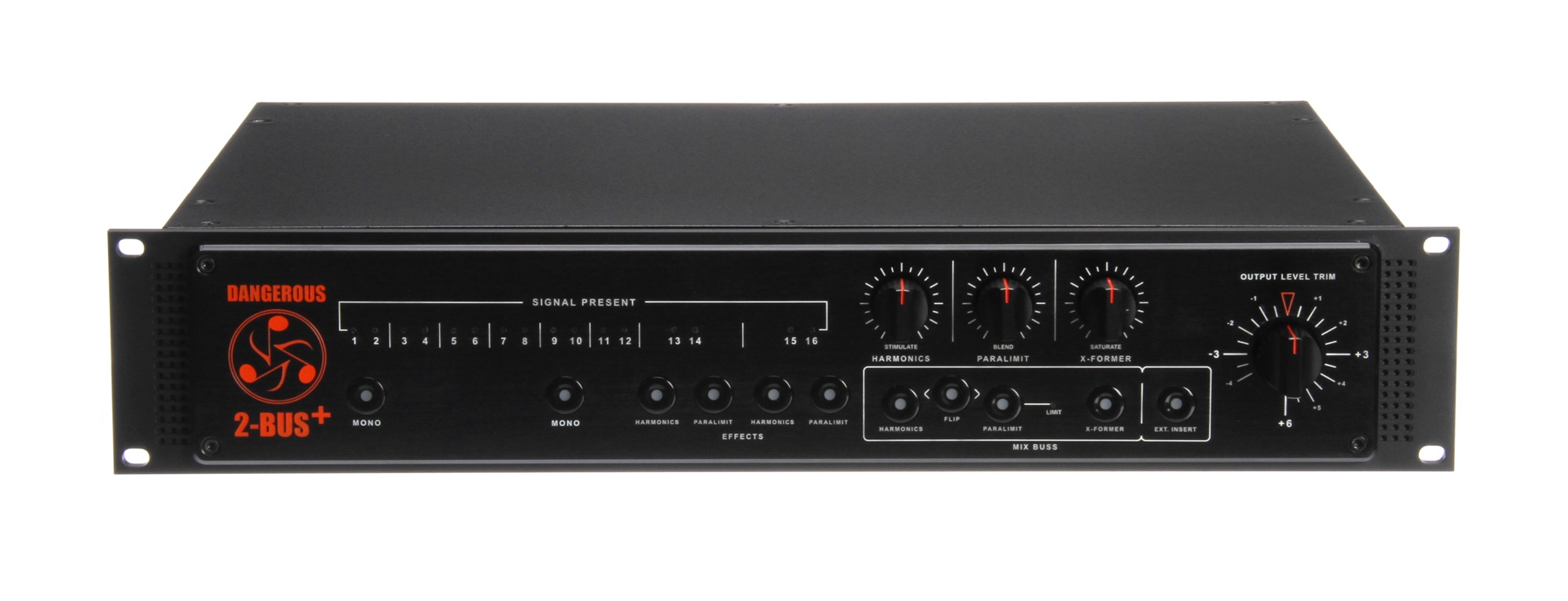


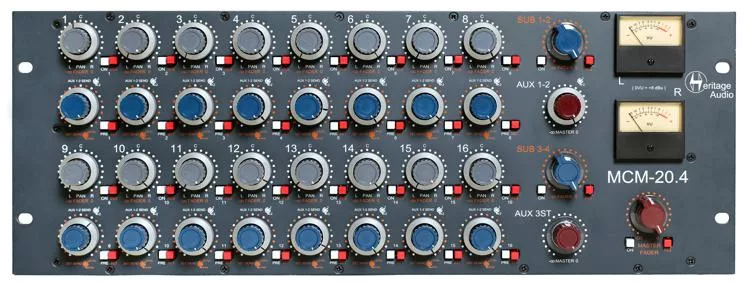


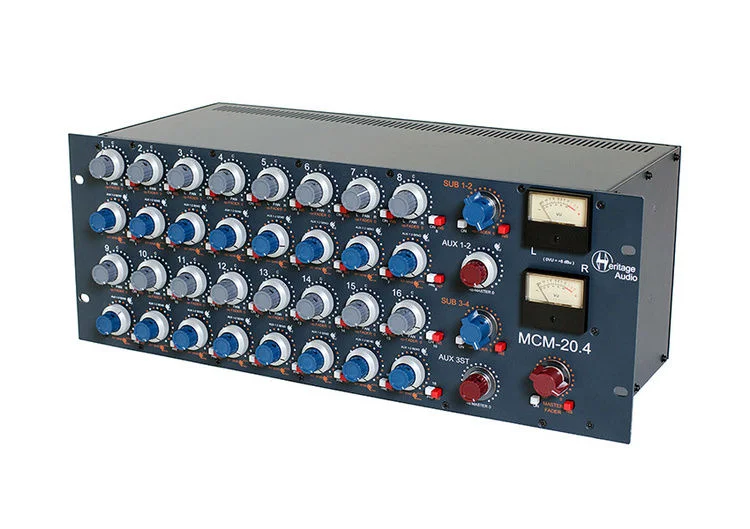
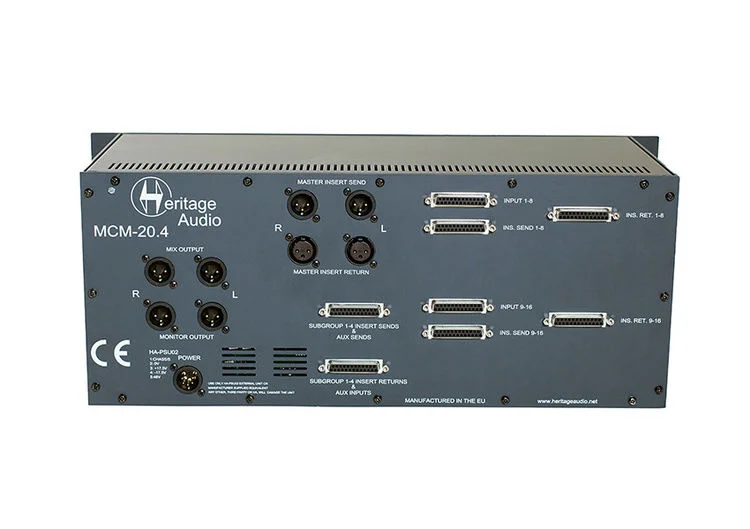


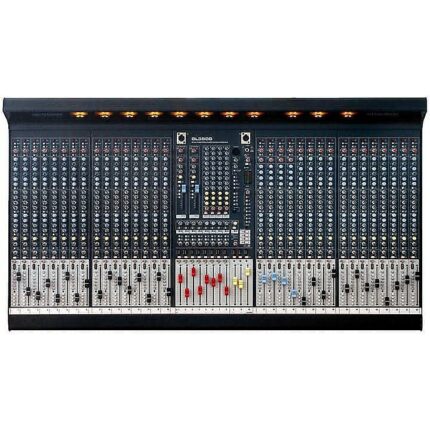






Reviews
There are no reviews yet.